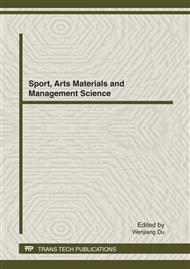p.3
p.7
p.11
p.16
p.21
p.25
p.30
p.34
p.38
The Effect of Impurity Atoms on the Structural and Electronic Properties of Au3 Clusters
Abstract:
With density functional theory, the structural and electronic properties of Au3 and Au2M (M=Ag, Cu, Pd and Pt) clusters have been studied. The structural results indicate that by substituting one Au atom with M atom, the corresponding geometries are changed slightly. To investigate the electronic properties, bonding properties and highest occupied molecular orbital (HOMO) were observed. It is found that most trends in Au2Pd and Au2Pt are similar and it also happens in the other two doped clusters. In addition, the calculated mulliken overlap populations suggest that doping modify the localized electron between Au and Au atom. It is also found that the contributions from various atoms on HOMO and energies of HOMO are changed. These may make difference in the adsorption of clusters.
Info:
Periodical:
Pages:
21-24
Citation:
Online since:
April 2012
Authors:
Keywords:
Price:
Сopyright:
© 2012 Trans Tech Publications Ltd. All Rights Reserved
Share:
Citation:


